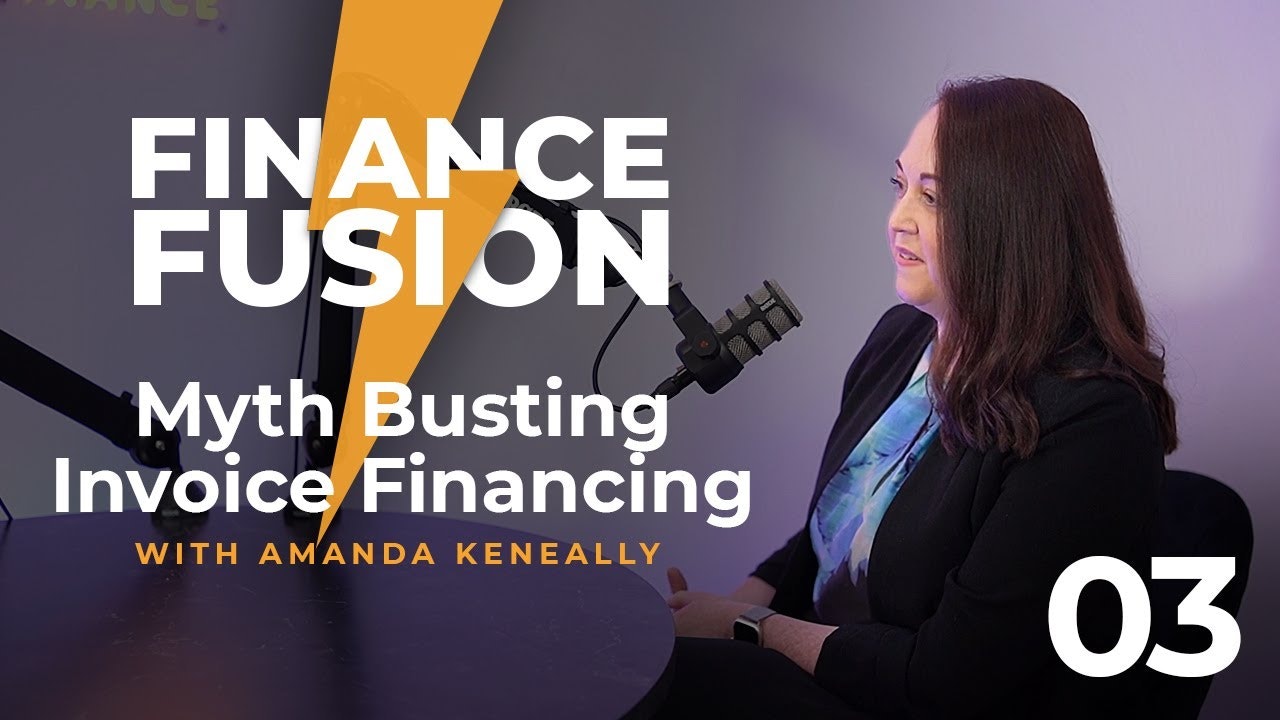Supercharging Business Growth with Smart Invoice Financing Strategies
Our NSW/ACT State Manager, Amanda Keneally, recently featured in an episode of the Finance Fusion podcast with Louie Dib of Odin Finance.
In the podcast, Louie and Amanda explore the business sectors that align effectively with invoice financing. They delve into the remarkable transformation of invoice financing from a last-resort product to a financially viable option for businesses. Additionally, they examine the flexibility Earlypay shows when determining a business’s eligibility for invoice finance.
Amanda also addresses common concerns associated with invoice financing and talks about the technological advantage in streamlining the invoice financing process, how it stands out to other new lenders, and strategies for mitigating the costs associated with invoice financing.
Podcast overview
How does invoice finance work?
You have a business supplying services to another business. They issue an invoice for those services, which is typically raised with payment terms of some sort — for example, 30, 60 or 90 day credit terms. Essentially, what invoice finance does, is speeds up that cash flow. On the day that they issue the invoice, rather than waiting the credit terms for their customer to pay, invoice finance advances them a portion of that invoice to bring cash into the business faster.
What industries benefit from invoice finance?
There are some key industries that get a lot of value from invoice finance, but it can work for almost any business providing goods or services to other businesses under payment terms.
Key industries:
- Recruitment
- Traffic management
- Security
- Cleaning
- Transport and logistics
- Wholesale and distribution.
- Manufacturing
- Civil sectors for example wet and dry hire.
What industries are not suited to invoice finance?
The construction industry is complicated because they supply services under progress payments. Where a job has not been completed, it will not be eligible for invoice finance. This can extend to marketing and IT sectors where they work on milestones.
Any business invoicing where the work isn’t fully completed is typically not a business we’re able to support. This is because the finance is repaid when the business’s customers pay their invoices. So if there is room for customers to be disputing the amount owed, it becomes too big of a risk for the lender to be advancing cash based on the amount in question. At the end of the day, this is to protect the business utilising invoice finance. If we are advancing them money based on their accounts receivable ledger, we want to be confident that their customers are going to be paying their invoices which repays the finance.
Breaking down the stigma
Years ago, invoice finance was considered the product of last-resort. It was where businesses would go when they weren’t eligible for anything else. Perhaps they didn’t have property or other assets to leverage for other forms of finance. Because of this risk associated with the businesses, invoice finance was typically quite expensive. There was also concern from businesses that their customers would think they’re in distress because they’re accessing a form of finance with a lot of stigma attached.
Things have changed dramatically and invoice finance is now a very cost-effective working capital solution. With invoice finance, there is often an element of having to communicate with a business’s customers which can leave business owners feeling a bit uneasy. But at the end of the day, if their customers are expecting goods or services provided upfront, with payment not being due for 30 or more days, they have to expect that the business will be utilising some type of working capital support.
How is the interest rate on invoice finance charged?
Interest is accumulated only on the amount outstanding, for the duration it’s outstanding. So if a business is only needing to draw down funds from the invoice finance facility every so often, it can become a very cheap form of finance.
Louie and Amanda workshopped a scenario for a transport company where the overall cost of the invoice finance facility worked out to be 1% of their annual gross profit. The finance facility meant the company was able to access outstanding cash instantly, enabling them to scale their business and increase their revenue considerably. In this case, the business considered invoice finance to be a no-brainer.
For more information on invoice finance, including eligibility of businesses with tax debt, comparing invoice finance to other forms of funding, and much more, please listen to the full podcast.
Spotify: https://open.spotify.com/show/2NnKK0lGYvrstzfY6OXeAu
Amazon Music: https://music.amazon.com/podcasts/42065cc7-d16b-48d0-a77a-a5ff2d2a889f/finance-fusion
